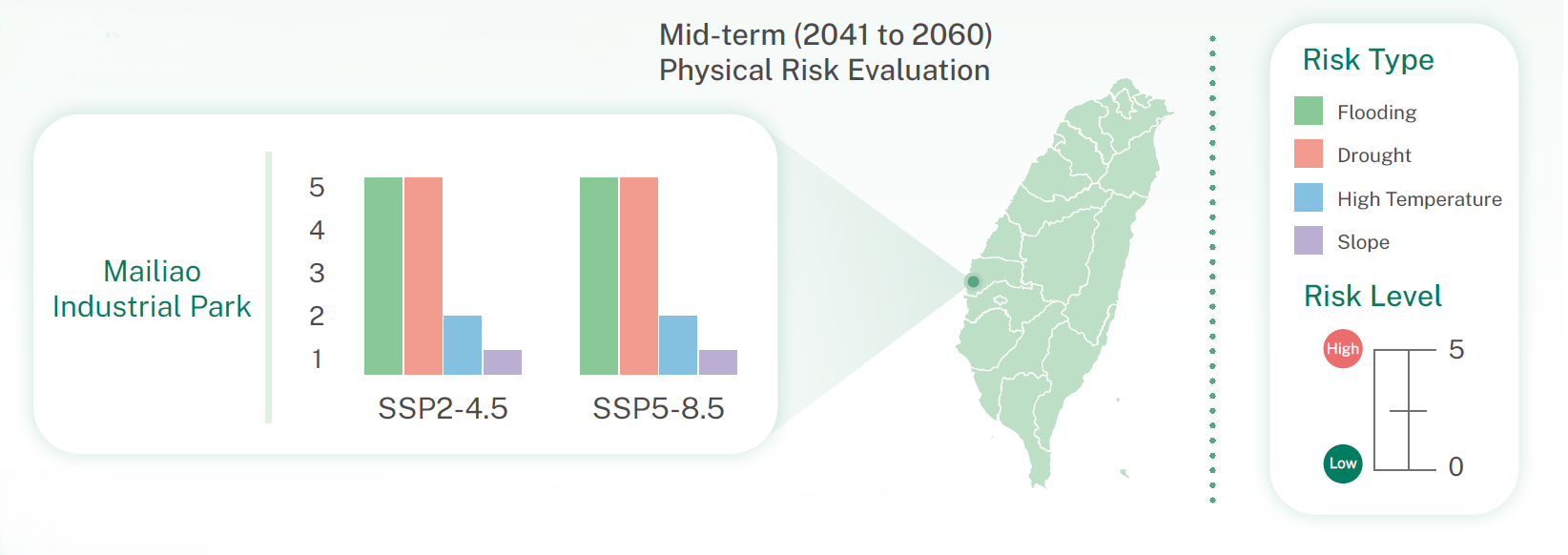
 Creating a New Green Appearance
Creating a New Green Appearance Climate change mitigation and adaptation
Climate change mitigation and adaptation Climate Risks and Opportunities
Climate Risks and Opportunities 
 Creating a New Green Appearance
Creating a New Green Appearance Climate change mitigation and adaptation
Climate change mitigation and adaptation Climate Risks and Opportunities
Climate Risks and Opportunities After identifying climate risks and opportunities, risk indicators are evaluated based on the degree of impact and probability. After determining the level of risk and opportunity, short-, mid-, and long-term goals are set for mitigation, transfer, control, and acceptance. Since the Company is applying the IFRS Sustainability Disclosure Standards for the first time, there is no qualitative or quantitative information on the progress of the plan for the previous reporting period.
Analysis Process for Climate Change Risks/Opportunities
Climate Physical and Transition Scenario Analysis
Global climate change is intensifying. FPCC is deeply aware of its potential impact on the petrochemical industry, therefore the Company has identified potential risks and opportunities that it may face through scenario analysis of opportunities, transition risks, and physical risks.
To actively respond to climate transition risks, FPCC adopts low-carbon technologies, improves energy efficiency, and adjusts its supply chain to reduce its carbon footprint. Furthermore, the company has strengthened its climate resilience to address physical risks, enhance infrastructure disaster resistance, optimize water resource management, and establish climate risk monitoring mechanisms to ensure stable operations. FPCC will continue to leverage advance planning to maintain its competitive advantages and achieve sustainable development.
List of Climate Change Risk/Opportunity Scenario Analysis
Summary of Climate Change Physical Risk Scenario Analysis
Note: The values in this table are based on scenario SSP5-8.5, extreme weather risk management is carried out in the climate change medium-term scenario (2050).
Summary of Climate Change Physical Risk Scenario Analysis

Financial Impact of Climate Change Risk/Opportunity Issues